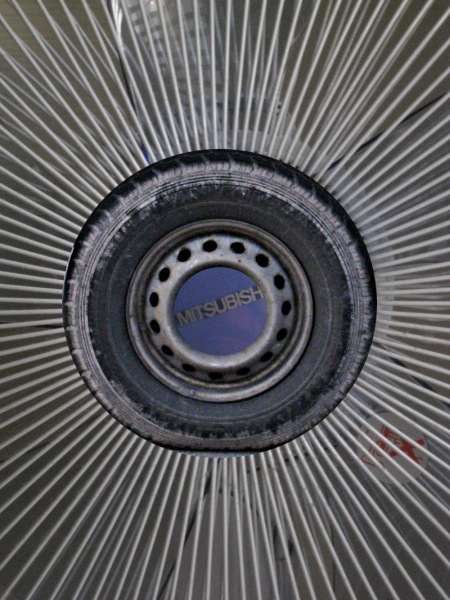Archive for the 'climate' Category
broomm economy
Tuesday, April 7th, 2009bad bad banks
Wednesday, February 4th, 2009diversity
Friday, January 30th, 2009In a previous post/comment I suggested that the genetic information about nowadays people and animals may be an important information to store on a long term basis.
In the comment I gave a rough estimation on how much computers would cost to capture DNA sequences, I did not include maintanance etc., i.e. the computation was only intended to give an faint idea about the costs. And of course one could also think about storing e.g. bones or the easy available hair, from which the DNA can be recovered.
The option should be voluntarily, but easily accessible to everyone, so that diversity is maintained. it should contain extra information, like geographical and birth/death-date and so on.
I put the suggestion here in a blog post in case people want to discuss.
nuclear vehicles
Thursday, November 20th, 2008about Gorleben
Wednesday, November 12th, 2008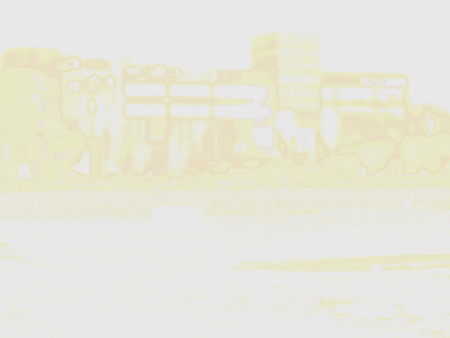
Someone was asking me wether I am pro or contra using Gorleben as a final nuclear waste repository.
The answer is: I don’t know.
Most of the containers brought there seem to be an interim solution, so at one point one is forced to think about what to do with the material. The salt dome at Gorleben which was originally planned as a final repository (in the late seventies) was declared (if I trust the Wikipedia link) by the Physikalisch-Technische Bundesanstalt (resource: Zusammenfassender Zwischenbericht über bisherige Ergebnisse der Standortuntersuchung in Gorleben. Mai 1983, Braunschweig as less suitable:
„Eine erste Bewertung des Deckgebirges hinsichtlich seiner Barrierenfunktion für potentielle kontaminierte Grundwässer zeigt, daß die über den zentralen Bereichen des Salzstocks Gorleben vorkommenden tonigen Sedimenten keine solche Mächtigkeit und durchgehende Verbreitung haben, daß sie in der Lage wären, Kontaminationen auf Dauer von der Biosphäre zurückzuhalten.
translation without guarantee: A first evaluation of the sediments above the dome with respect to their functioning as a barrier against potential contaminated ground water displays that the clay sediments above the central parts of the salt dome Gorleben do not have enough thickness and spreading in order to prevent in perpetuity the contamination of the biosphere.
And there are other reports which indicate that there may be more geological problems.
Moreover the decision for Gorleben as a final repository was influenced by political/non geological citeria, like the one that Gorleben used to be close to the border of the former GDR and thus economically less attractive.
So it seems that a profound investigation also of other possible locations and their comparision with Gorleben has to be made.
Last not least I feel quite uncomfortable with the notion of “final repository” in general. If it means that the stuff is dumped there and then more or less left alone (and thus in the long term forgotten) then this can become very problematic (see e.g. Asse II).
It is important that the problem of nuclear waste is always present in the public mind (so alone for that reason peaceful protest is usually good).
This implies that the information about nuclear waste repositories, former nuclear production sites and in general about (possibly) contaminated sites has to be easy accessible for everybody and in particular for future generations. In particular one would expect that there exists a detailed map about such sites in the internet (“a google earth for nuclear sites” ?), however I have found nothing of this kind even not on the page of the International Atomic Energy Agency like on the pages of their waste technology section. The Dirata Database (which was hard to find) is a first step. Moreover it is a challenge to adress the waste problem which is involved with small size waste like with these mini nuclear power plants (e.g. probably soon in Romania) and where one reads the following about a company called Hyperion (which seems to have already a six year waiting list):
“Because the Hyperion plants would be buried underground and guarded by a security detail, the company explains that they´ll be out of sight and safe from illegitimate uses.”
Next year, the company will submit an application to build the modules to the Nuclear Regulatory Commission.
As a matter of fact the world has to think about how to make important information of nowadays accessible to future generations. The Svalbard fault, where information about plants is kept is one example. The genetic information about nowadays people and animals may also be important information to store somewhere in a “world treasure box” (especially given all of the above). A map with information about nuclear sites certainly has to go as well into that treasure box.
->see also this BBC report about a lost US nuclear bomb over greenland (via Tagesschau.de). The cancer records in denmark seem to be sofar only partially online. It would be interesting to look into them like into these ones.
addition Jan. 28, 2020:
Here a link to a blog post on Ars Technica about the Nature Materials article , 2019. DOI: 10.1038/s41563-019-0579-x, “Self-accelerated corrosion of nuclear waste forms at material interfaces”, which illustrates that plans to store nuclear waste by putting it first into a layer of chemically inert, insoluble glass and then putting this into a stainless steel flask are basically not working when this type of containment is exposed to water.
addition Feb. 8, 2020:
The essay Death and succession among Finland’s nuclear waste experts is an essay by anthropologist Vincent Ialenti about how the death of a leading finnish engineer (with the pseudonym Seppo) concerned with nuclear waste management gives an exemplary insight into “a larger, global expert-loss drama.” The essay gives also a very brief descriptiosn about finnish methods of nuclear waste storage (see below).
I do not fully agree with Ialenti’s conclusions and interpretations, but it is an interesting read into a “drama”, that is not only taking place in nuclear engineering, but also in other technical fields. The “drama” is largely due to an understaffing of the technical sector in societies that are largely “run” (in an economical and political sense) by people with not so much technical expertise.
Ialenti describes:
Studying Seppo’s character and influence anthropologically is not about capturing exactly what he thought, precisely what he did, or how he did it. Rather, it’s about examining the effects of “what would Seppo do here?” moments, in which surviving colleagues brought recollections of the man to bear on their present work.
Ialenti suggests:
“I propose that nuclear experts pause for a moment to consider how they can best preserve the memory of an expert’s thinking patterns in their work lives. Cultivating that style of self-reflection can help nuclear experts better understand their predecessor’s insights that they may already be preserving.”
I think it is less “thinking patterns” per se that are sought with the question “what would Seppo do here?”, but more desicion making patterns, i.e. questions of where do you set priorities, where do you think more research is necessary etc. in order to make a decision. In important settings engineers usually already document why they decided to do something in this or that manner (sometimes this is though not openly possible) and there are by the way also computerized tools which support this, but of course the less time there is for performing technical tasks (like due to understaffing) the less time there is for documentation and instruction. Last but not least what seems to be asked for here (?) is to document an experts intuition. Good luck with that.
The essay contains some technical inlets and in particular one about finnish nuclear waste containers:
Massive metal casks will encapsulate Finland’s spent fuel rods for long-term storage. The outer canister (left) is a cylindrical sleeve of copper, one meter long and five centimeters thick, intended to protect a cast-iron insert (right, here with one fuel rod) from the corrosive effect of groundwater for at least 100 000 years. The cast iron itself resists the mechanical stresses of bedrock.
which refers to the addtion on Jan. 28, 2020.
Remark to this: The Standard electrode potential(table in german) of Copper and Iron are close together so there is not such a high voltage (potential difference) between the two metals, but according to the german table it is still 0.39V. That is Copper acts here as an Oxidizing agent and presumably if the container is not super tight then the iron might rust even faster than without copper container – or in other words the copper container is rather the “opposite” of an Galvanic anode. Copper is considerably easily dissolvable by acids (In that context one might think of sulfate in groundwater).
commemorating Tricastin
Sunday, November 9th, 2008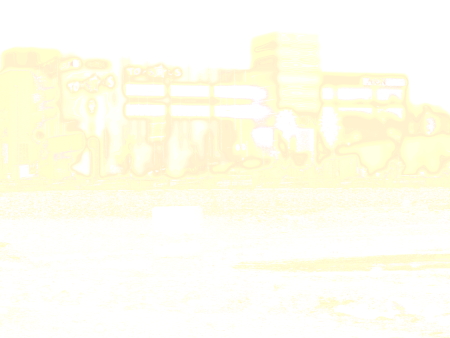
On the occasion of the current protests over here in Germany against a castor transport of nuclear waste from La Hague to the rather unsecure nuclear waste storage unit at Gorleben* I’d like to commemorate the lately average at Tricasin.
*(see also reports about a nuclear waste storage facility in a salt mine called Asse II, which has to be closed due to leakage)
visiting randform at home
Monday, September 29th, 2008We are moving again, so I fastly took some pictures of our appartment house here in Fukuoka. I felt I should report about the housee. What is so interesting about it? Well it is definitely not so pretty and some of the neighbouring facades are in architectural terms much nicer (see images). Some of the buildings are actually due to some international architectural competition which took place here in the neighbourhood.
However despite being rather unpretty there is something clever about the building, which is – the buildings temperature regulation. The building has deep front south-west balconies, which provide a lot of shade. But due to big windows the rooms inside – on the front side – are lighter than one would imagine (Being amidst packing I preferred not to show you pictures from the appartment inside..;)…it actually seems to look messier and messier every time I enter it…as if a taifun walks through it while I’m gone – just joking :O). The appartment extends through the whole building, i.e. the entry is on the north-east side. The north-east side has giant concrete fortifications against earthquakes, which are sometimes forming little open chimneys. The wind direction is almost parallel to the buildings main axis (i.e. rather perpendicular to the appartments), with a slight tilt towards south. As a result you dont have strong drafts inside the appartment, but if you leave the doors and windows open there is always a nice air circulation coming from the side of the rather cool concrete fortifications. Consequently, only few people in the building need an electric air condition – despite summer temperatures which may reach almost 40 degrees celsius.

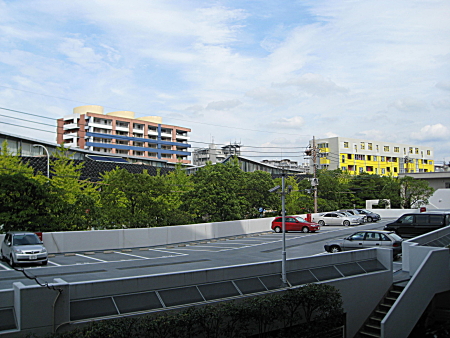
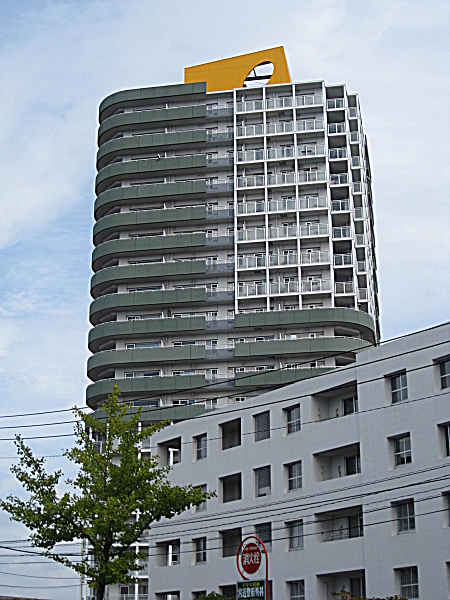
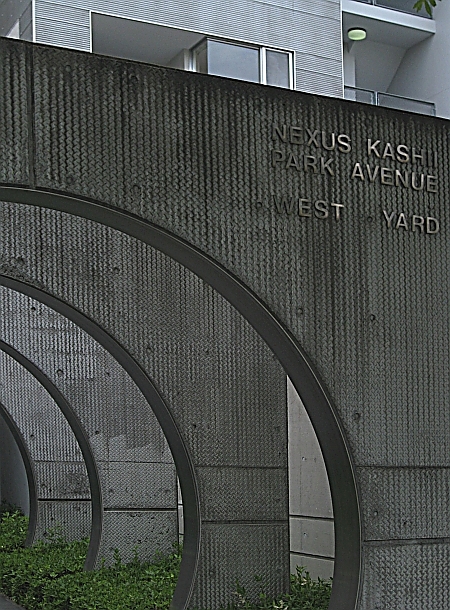
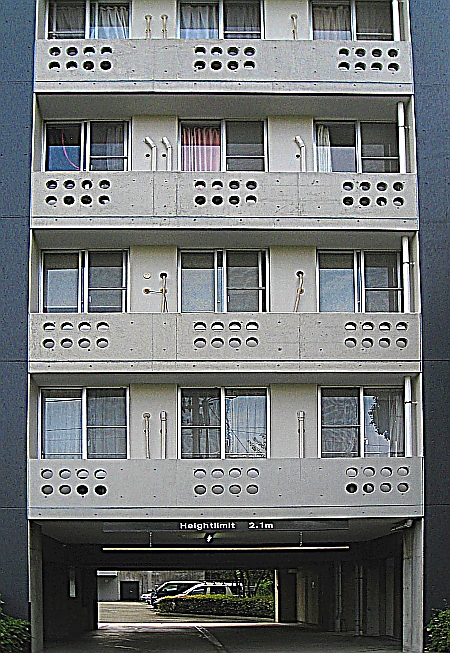
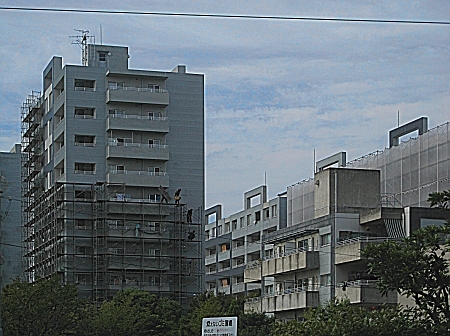


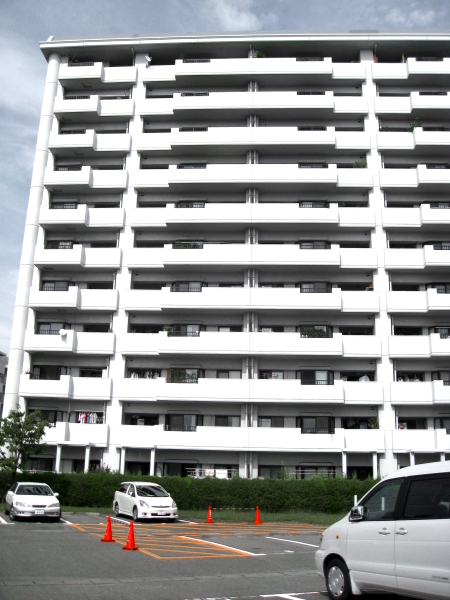
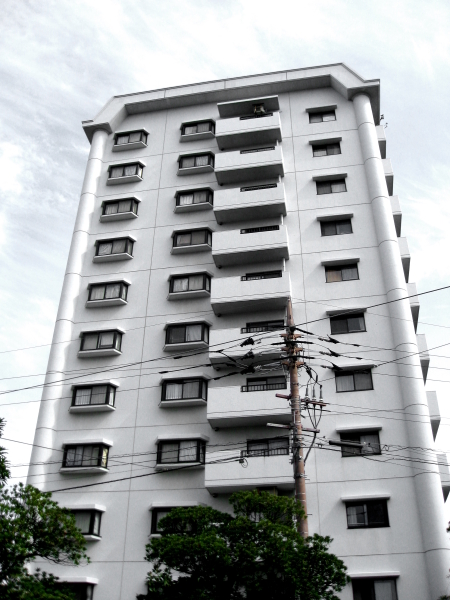
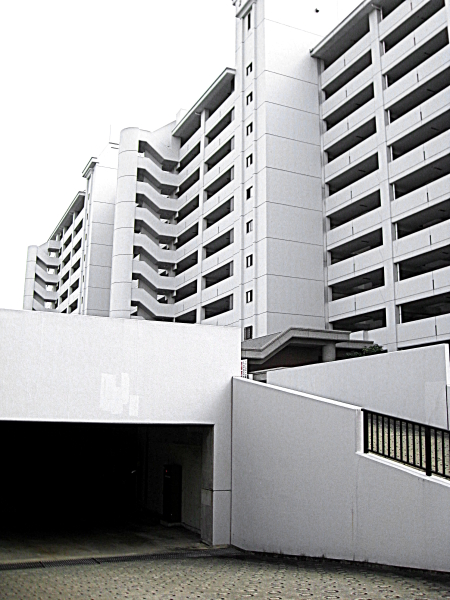
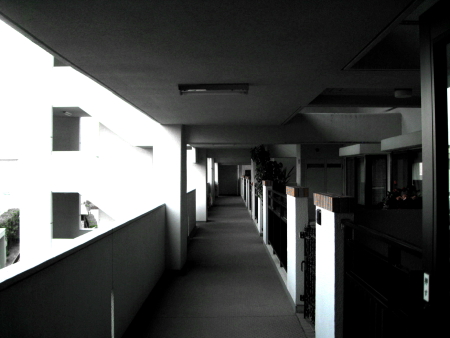
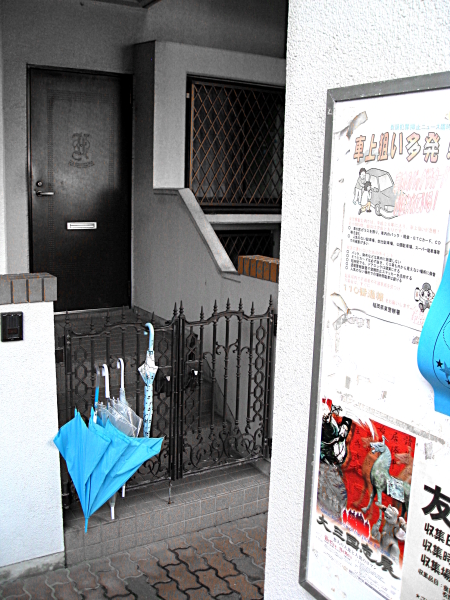
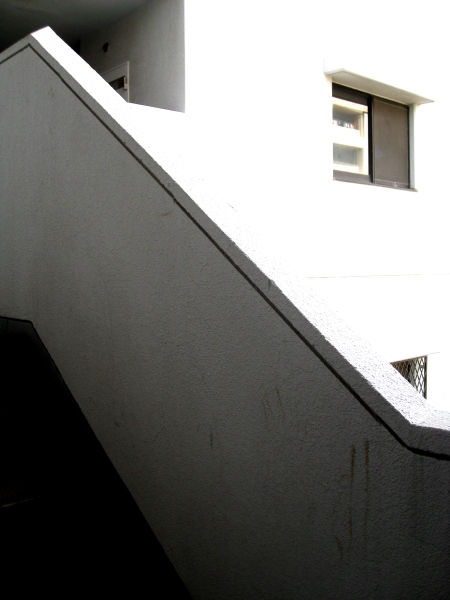
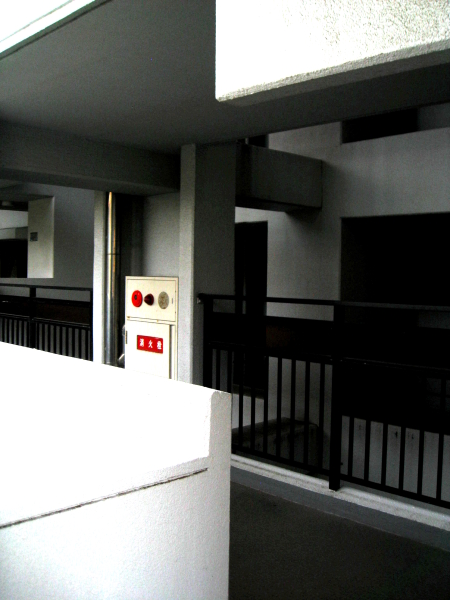

speckulations
Friday, September 12th, 2008
The revelation of revolting food: “Wer hat das schoenste Gemuese im Land?” pastell on paper, artwork by Matter Bahri
The recent (partially rather violent) food crisis has shed some light on the conflicts to be expected if resources are getting even scarcer.
nuclear bombs and Monju
Wednesday, August 6th, 2008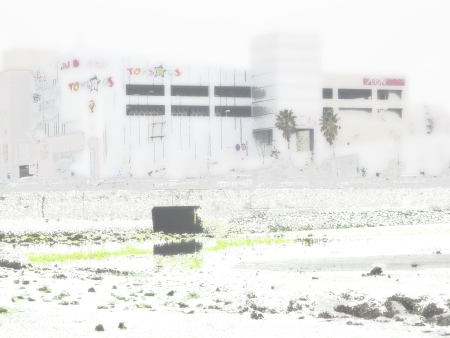
Hiroshima and Nagasaki, the two cities which suffered under a US nuclear attack are in the vicinity of Fukuoka (where the writers of this blog are currently located), so there are quite some people around here for whom these attacks are not just a scary story but bitter reality.
The bombs were a production of the Manhattan Project which was initiated by the fear that Nazi Germany could develop bombs of its own (which turned out wasn’t the case) and there were plans to throw nuclear bombs on Ludwigshafen, Mannheim and Berlin. Luckily Berlin capitulated early enough! If this wouldnt have been the case you probably wouldnt read this blog, as both of my parents were in Berlin in wartimes (with a few exceptions: my father and his mother (a single mom) were evacuated to Bavaria for a short time and my mother and her mother went on a trip to get the mother of my grandmother (whose husband died already in the first world war) out of Poland)
Among the targets of the US bombs were the Mitsubishi Steel and Arms Works and it is a strange coincidence that right this company is currently developing Japans new fast breeder at Monju (partially in collaboration with russia). At this point one should repeat that fast breeders bear a high proliferation risk.
The old fast breeder in Monju was closed in 1995 following a serious sodium leak (which was luckily not radioactive like this leak) and fire. It is expected to reopen in 2008.
